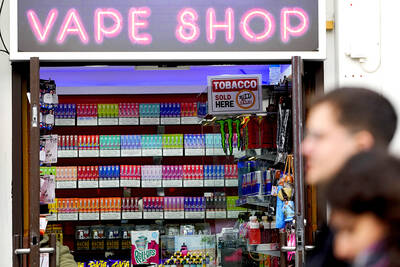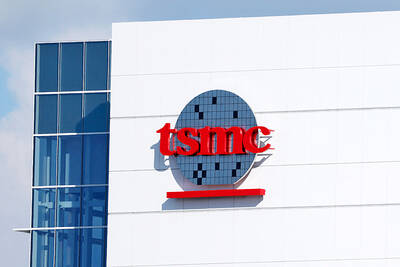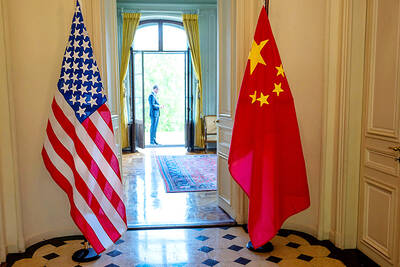It will be business as usual when Federal Reserve Chairman Alan Greenspan wraps up nearly two decades at the Fed tomorrow.
He probably will raise interest rates one last time as he presides over the Federal Open Market Committee. Afterward, there will be a low-key luncheon with his colleagues and a reception for Fed staffers.
Greenspan will be leaving on top -- rare in Washington -- when he walks out the door of the Fed's imposing marble building.
Widely viewed as the most successful chairman in the Fed's 92-year history, Greenspan presided over an era of low inflation rates, low unemployment and the longest economic expansion in US history -- a decade of uninterrupted growth from March 1991 to March 2001.
Greenspan was a master in handling not only the economy but also the treacherous waters of politics. He won nominations for the Fed job from four presidents -- three Republicans and one Democrat. The occasional critics said he was too political.
Upset over Greenspan's support of US President George W. Bush's tax cuts, Senate Minority Leader Harry Reid, a Democrat, said Greenspan was "one of the biggest political hacks we have in Washington."
In Greenspan's early days, Wall Street investors also harbored concern that Greenspan, who had advised Republican presidents Richard Nixon, Gerald Ford and Ronald Reagan, would lack the iron-willed independence needed to fill the shoes of Paul Volcker.
Volcker conquered a decade-long bout of double-digit inflation by driving up interest rates to levels not seen since the Civil War.
Showing his own inflation-fighting credentials, Greenspan pushed through a half-point rate increase at his first Fed policy meeting. After just two months on the job, the stock market crashed. It was called Black Monday, Oct. 19, 1987; many blamed Greenspan's credit-tightening.
The Fed declared it stood ready to lend freely to distressed institutions. It was a policy that would become a hallmark of Greenspan's tenure. The market stabilized and began rising. So did Greenspan's star.
It was the first of many economic crises that would confront Greenspan.
From 1989 to 1992, hundreds of savings and loans and banks -- more than at any time since the Great Depression -- went out of business.
A global currency crisis began in Asia in 1997 and spread to Russia. Some 40 percent of the global economy was pushed into recession. The US economy was seriously threatened before Greenspan's Fed stepped in with a series of rapid-fire rate reductions in the fall of 1998.
The stock market bubble burst in 2000, wiping out trillions of dollars in paper wealth.
During Greenspan's 18-and-a-half years in office, the country had two recessions. The first was in 1990-1991, when oil prices spiked after Iraq invaded Kuwait. The second came in 2001 in the aftermath of the steep plunge in stock prices in the previous year. Both were mild downturns that lasted eight months each.
By contrast, in the 18 years before Greenspan took over at the Fed, the US experienced four severe downturns.
By the numbers, the overall economy has done well during Greenspan's terms.
Consumer inflation soared as high as 13.3 percent in 1979 amid a decade of oil shocks. It was at 3.4 percent last year, even though the country was hit by another oil surge that pushed gasoline prices above US$3 per gallon (3.8 liter).
Unemployment stands at 4.9 percent after dropping to a four-decade low of 4 percent in 2000. Greenspan was able to convince skeptical Fed colleagues that rising productivity would allow jobless rates to fall without triggering inflation.
Private analysts believe Greenspan is being modest.
"Greenspan has had the most successful tenure in Fed history. He kept inflation under very tight control while avoiding any major recessions," said David Wyss, chief economist at Standard & Poor's in New York.
Of course, there were some controversies.
Many analysts cite Greenspan's decision to support the current president's tax cuts in 2001. They helped push the federal budget from trillion-dollar surpluses to record deficits.
Greenspan says he would recommend tax cuts again, given projections -- which failed to happen -- of budget surpluses that would total US$5.6 trillion over a decade.
He is also faulted for failing to rein in the high-flying stock market in time. He did famously wonder in 1996 whether investors could be in the grip of "irrational exuberance." But prices kept climbing. When the bubble burst, Greenspan moved to contain the damage by lowering interest rates.
"If Greenspan had been stronger in his views, then the bubble would not have been as large and the subsequent correction not as severe," said Mark Zandi, chief economist at Moody's Economy.com.
Greenspan's response: To pop the bubble earlier, the Fed would have had to raise interest rates so high that the country would have been pushed into a severe recession. As his influence grew, Greenspan was called upon to advance opinions on matters beyond the realm of monetary policy. Not only did he lend support to Bush's tax cuts, but eight years earlier he blessed former US president Bill Clinton's tax increases to deal with troubling budget deficits.
This opened him to attacks from both Republicans and Democrats.
By comparison, Ben Bernanke, the former Princeton economics professor selected to succeed Greenspan, says he plans to limit his public advice to areas directly under the Fed's control.
Bernanke has also pledged to follow the Greenspan play book when it comes to running the economy.
That may turn out to be Greenspan's most lasting legacy.

Real estate agent and property developer JSL Construction & Development Co (愛山林) led the average compensation rankings among companies listed on the Taiwan Stock Exchange (TWSE) last year, while contract chipmaker Taiwan Semiconductor Manufacturing Co (TSMC, 台積電) finished 14th. JSL Construction paid its employees total average compensation of NT$4.78 million (US$159,701), down 13.5 percent from a year earlier, but still ahead of the most profitable listed tech giants, including TSMC, TWSE data showed. Last year, the average compensation (which includes salary, overtime, bonuses and allowances) paid by TSMC rose 21.6 percent to reach about NT$3.33 million, lifting its ranking by 10 notches

Popular vape brands such as Geek Bar might get more expensive in the US — if you can find them at all. Shipments of vapes from China to the US ground to a near halt last month from a year ago, official data showed, hit by US President Donald Trump’s tariffs and a crackdown on unauthorized e-cigarettes in the world’s biggest market for smoking alternatives. That includes Geek Bar, a brand of flavored vapes that is not authorized to sell in the US, but which had been widely available due to porous import controls. One retailer, who asked not to be named, because

SEASONAL WEAKNESS: The combined revenue of the top 10 foundries fell 5.4%, but rush orders and China’s subsidies partially offset slowing demand Taiwan Semiconductor Manufacturing Co (TSMC, 台積電) further solidified its dominance in the global wafer foundry business in the first quarter of this year, remaining far ahead of its closest rival, Samsung Electronics Co, TrendForce Corp (集邦科技) said yesterday. TSMC posted US$25.52 billion in sales in the January-to-March period, down 5 percent from the previous quarter, but its market share rose from 67.1 percent the previous quarter to 67.6 percent, TrendForce said in a report. While smartphone-related wafer shipments declined in the first quarter due to seasonal factors, solid demand for artificial intelligence (AI) and high-performance computing (HPC) devices and urgent TV-related orders

MINERAL DIPLOMACY: The Chinese commerce ministry said it approved applications for the export of rare earths in a move that could help ease US-China trade tensions Chinese Vice Premier He Lifeng (何立峰) is today to meet a US delegation for talks in the UK, Beijing announced on Saturday amid a fragile truce in the trade dispute between the two powers. He is to visit the UK from yesterday to Friday at the invitation of the British government, the Chinese Ministry of Foreign Affairs said in a statement. He and US representatives are to cochair the first meeting of the US-China economic and trade consultation mechanism, it said. US President Donald Trump on Friday announced that a new round of trade talks with China would start in London beginning today,